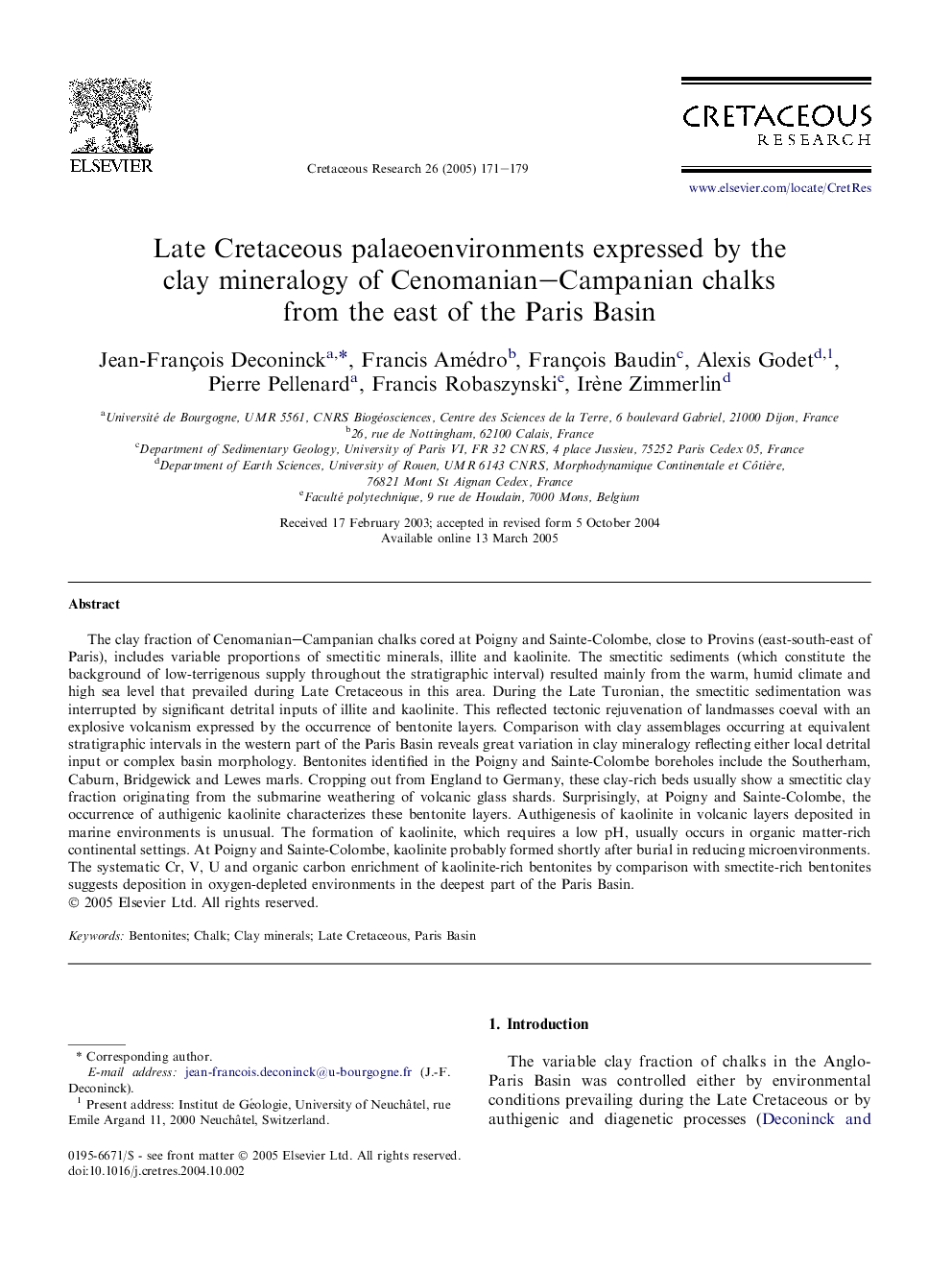| کد مقاله | کد نشریه | سال انتشار | مقاله انگلیسی | نسخه تمام متن |
|---|---|---|---|---|
| 9538944 | 1359950 | 2005 | 9 صفحه PDF | دانلود رایگان |
عنوان انگلیسی مقاله ISI
Late Cretaceous palaeoenvironments expressed by the clay mineralogy of Cenomanian-Campanian chalks from the east of the Paris Basin
دانلود مقاله + سفارش ترجمه
دانلود مقاله ISI انگلیسی
رایگان برای ایرانیان
کلمات کلیدی
موضوعات مرتبط
مهندسی و علوم پایه
علوم زمین و سیارات
فسیل شناسی
پیش نمایش صفحه اول مقاله

چکیده انگلیسی
The clay fraction of Cenomanian-Campanian chalks cored at Poigny and Sainte-Colombe, close to Provins (east-south-east of Paris), includes variable proportions of smectitic minerals, illite and kaolinite. The smectitic sediments (which constitute the background of low-terrigenous supply throughout the stratigraphic interval) resulted mainly from the warm, humid climate and high sea level that prevailed during Late Cretaceous in this area. During the Late Turonian, the smectitic sedimentation was interrupted by significant detrital inputs of illite and kaolinite. This reflected tectonic rejuvenation of landmasses coeval with an explosive volcanism expressed by the occurrence of bentonite layers. Comparison with clay assemblages occurring at equivalent stratigraphic intervals in the western part of the Paris Basin reveals great variation in clay mineralogy reflecting either local detrital input or complex basin morphology. Bentonites identified in the Poigny and Sainte-Colombe boreholes include the Southerham, Caburn, Bridgewick and Lewes marls. Cropping out from England to Germany, these clay-rich beds usually show a smectitic clay fraction originating from the submarine weathering of volcanic glass shards. Surprisingly, at Poigny and Sainte-Colombe, the occurrence of authigenic kaolinite characterizes these bentonite layers. Authigenesis of kaolinite in volcanic layers deposited in marine environments is unusual. The formation of kaolinite, which requires a low pH, usually occurs in organic matter-rich continental settings. At Poigny and Sainte-Colombe, kaolinite probably formed shortly after burial in reducing microenvironments. The systematic Cr, V, U and organic carbon enrichment of kaolinite-rich bentonites by comparison with smectite-rich bentonites suggests deposition in oxygen-depleted environments in the deepest part of the Paris Basin.
ناشر
Database: Elsevier - ScienceDirect (ساینس دایرکت)
Journal: Cretaceous Research - Volume 26, Issue 2, April 2005, Pages 171-179
Journal: Cretaceous Research - Volume 26, Issue 2, April 2005, Pages 171-179
نویسندگان
Jean-François Deconinck, Francis Amédro, François Baudin, Alexis Godet, Pierre Pellenard, Francis Robaszynski, Irène Zimmerlin,